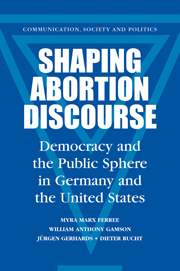Preface
Published online by Cambridge University Press: 15 December 2009
Summary
This book represents a collaboration in the fullest sense of that word. All four of us were heavily involved in every stage of the work – in the theoretical development and research design, in the development of research instruments, in the lengthy data collection process, and in the analysis and interpretation of results.
Close collaborations among any set of four people are complicated and difficult, but this one was especially challenging. We had to face complicated and subtle differences across lines of national cultures, gender, and epistemological approach. At numerous times, we all harbored doubts about our ability to produce a collective product. But we persevered and, in the end, we believe that we have produced a book that reflects us all and is richer than anything we could have produced individually.
In a book that focuses on the shaping of discourse, we have had to be especially self-conscious about our choice of language. What does one call the antagonists on the issue of abortion? How does one refer to the organism growing in the womb of a pregnant woman? There are no frame-free answers to these questions. Our solution has been to use the language of the two U.S. newspapers that we analyzed, The New York Times and The Los Angeles Times.
This means that we use “pro-abortion–rights” to refer to those who would lessen or remove legal or practical restrictions on abortion. We use “anti-abortion” to refer to those who would increase legal or practical restrictions (or defend those that exist from liberalization).
- Type
- Chapter
- Information
- Shaping Abortion DiscourseDemocracy and the Public Sphere in Germany and the United States, pp. xv - xviiiPublisher: Cambridge University PressPrint publication year: 2002



